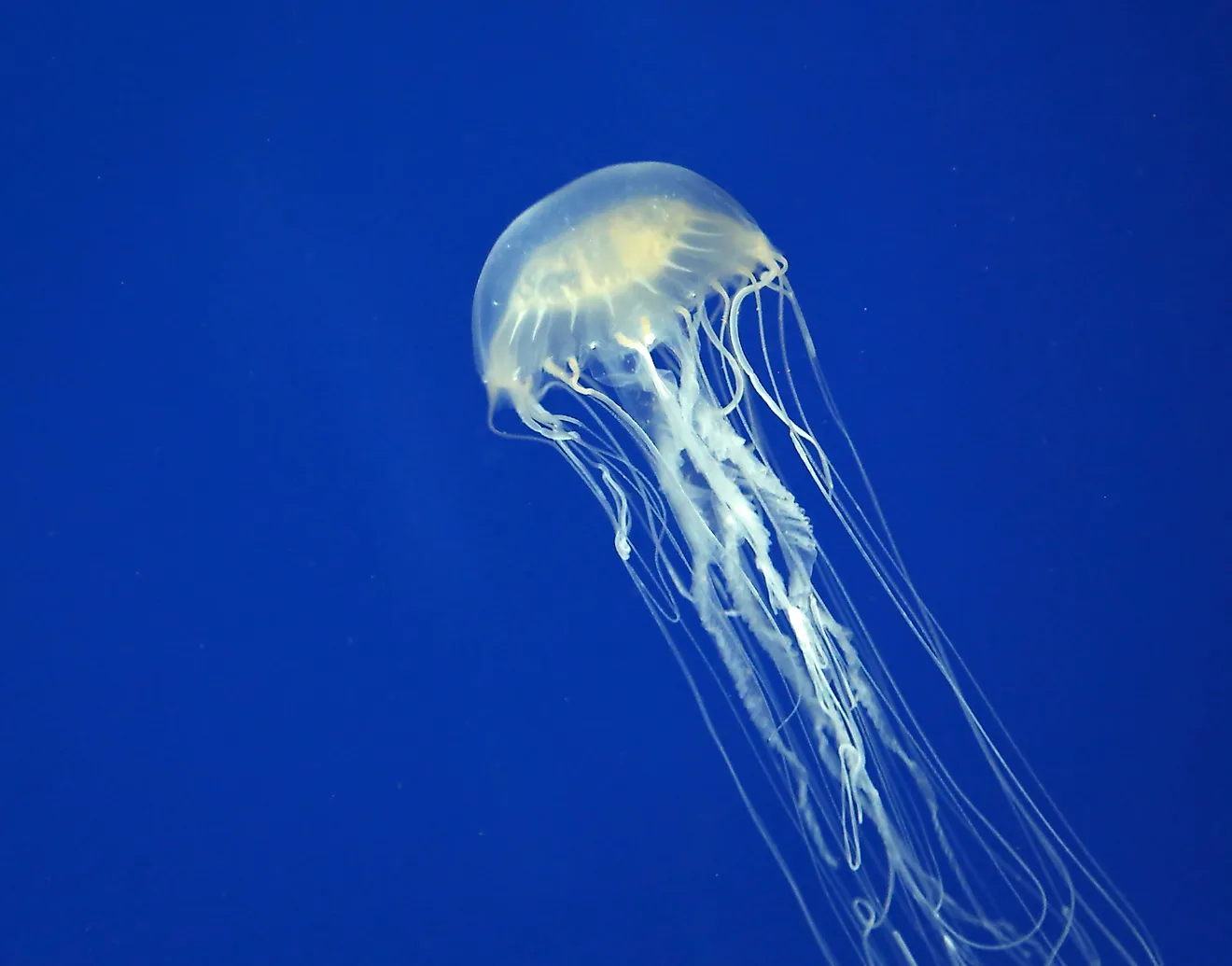Australian Box Jellyfish - Animals of Oceania

5. Physical Description
Gaining fame from incidents around the coast of Northern Australia, the Australian box jellyfish (Chironex fleckeri) is considered the most venomous marine creature in the world. Named for its cuboid shaped bell, which consists of four distinct sides, box jellyfishes are part of the Cubozoa class, and are not actually considered "true jellyfish", although they share many similar characteristics. As the largest species of the Class Cubozoa, the Australian box jellyfish can grow up to 10 feet (3 meters) in length and 10 inches (25 centimeters) in width, and can weigh up to 4.4 pounds (2 kilograms). Box Jellyfish mostly come in a transparently faint, blue color, which renders them practically invisible in the water.
4. Diet
With its venom and the reach of its tentacles, Australian box jellyfishes have no trouble capturing prey. Australian box jellyfish can grow up to 60 tentacles, with up to 5,000 stinging cells called "nematocysts". Nematocysts are akin to small hooks that latch onto their victims and deliver their venom. The stingers contain components that will damage the hearts, nerves, and skin alike. The agonizing pain alone is likely to send the creature into immediate shock, and they may experience cardiac arrest within minutes of being stung. However, most contact with humans is ruled as being accidental. In fact, despite having venom so potent to humans, their diet consists mainly of small fish, as well as shrimp and other crustaceans.
3. Habitat and Range
Residing mainly in the Indian Ocean and Pacific Ocean around Northern Australia and Southeast Asia, the Australian box jellyfishes prefer warm, shallow, murky waters, and they may gather in the mouths of rivers after rainy weather. Their numbers remain undocumented by the IUCN Red List. While most marine animals are suffering from overfishing and pollution, the jellyfish population has been thriving in oceans all over the world as a result of the decrease in competitors and predators, such as the green turtles, which are the only known predator of box jellyfish. Alarmingly, in recent years, box jellyfish have been found as far away from their traditional ranges as India, Cape Town, South Africa, and Florida.
2. Behavior
Uniquely, unlike true jellyfishes, box jellyfishes have eyes. Clustered in groups of six on all four sides of their bell, it is uncertain how the jellyfish processes sight without a brain. While they do not have a brain, they do have an advanced nervous system nonetheless, and it allows the box jellyfish to pulsate through the water rather than simply drift along as other jellyfish do. But, because of their active swimming unlike other jellyfishes, box jellyfishes require time to recharge between movements, and they do this by resting on the sea floor. They have also been seen to do this as they wait out turbulent waters.
1. Reproduction
Australian box jellyfishes can be found in shallow rivers during their polyp stage and, when they have grown into their medusa stage, they then follow the river back up into the ocean. When they become sexually mature, the box jellyfish will go back to freshwaters to mate, and die soon after spawning. During “stinger season” (lasting from October/November to May), swimmers are warned against swimming in oceans and rivers, as that is the time when the box jellyfish tend to migrate. If stung, victims should pour vinegar (as opposed to alcohol or urine) over the wound to inactivate the remaining stinging cells in order to remove the tentacles. In mild cases, painkillers and antihistamines may be used but, in more severe cases, anti-venom will be necessary.











